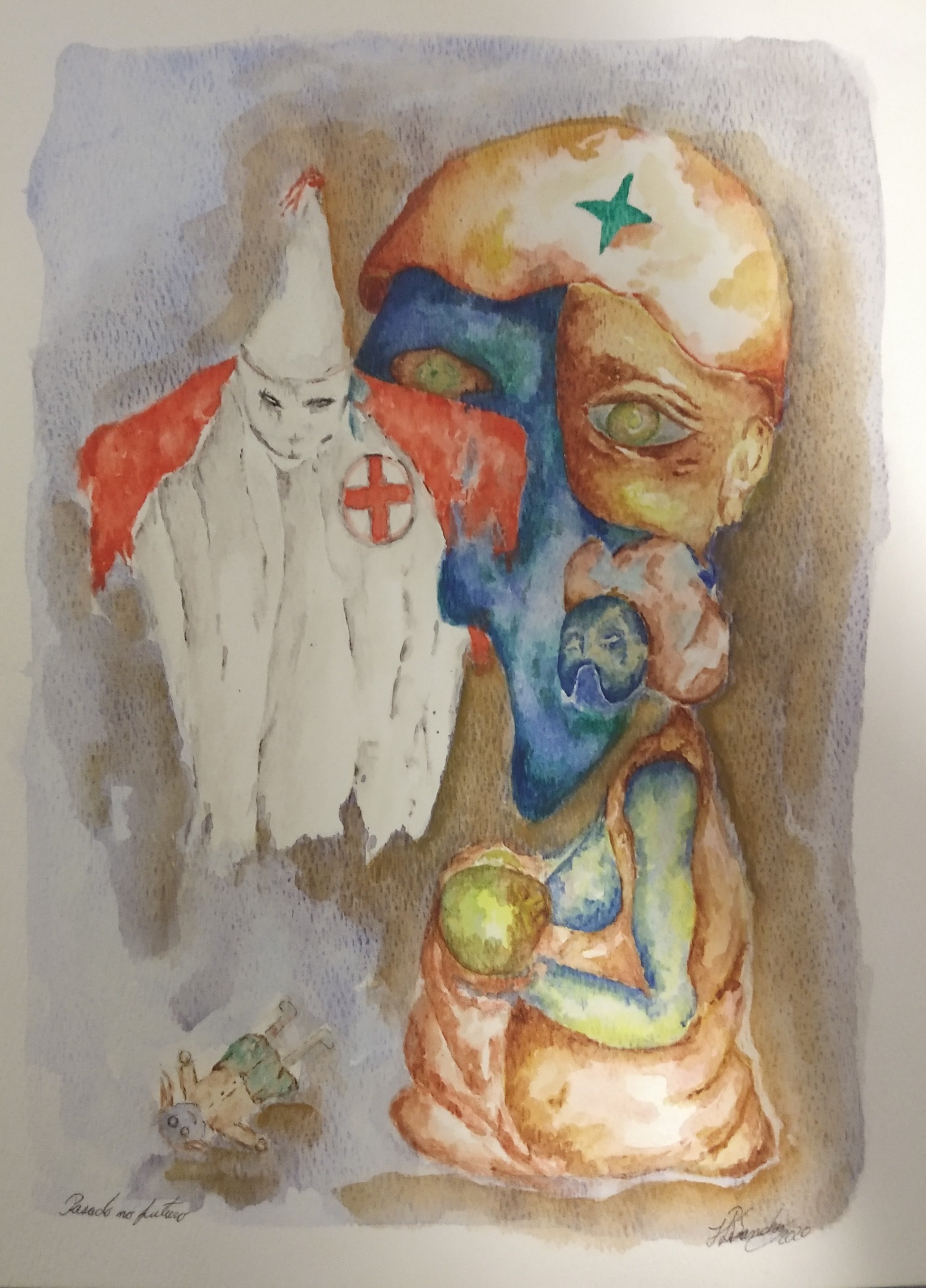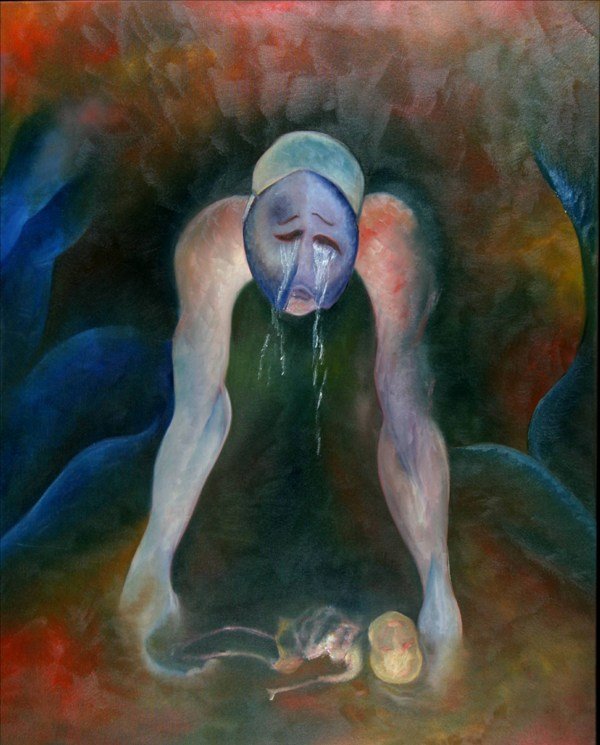HERNANDO RICO SANCHEZ
Past no future, Hernando Rico Sanchez, Watercolor on paper, 12 x 9 in., 2021, $1400
The work Past no future, is a somber look at the woman as a victim of beliefs. From past to future, the mask is the representation of any woman, one that resembles a black slave force to keep and feed a child and oppress by a ghost that is the remines of the clan or the inquisition. A woman that is under the watchful eye of a falling system hiding behind another mask.
Mi Choice, Hernando Rico Sanchez, Watercolor on paper, 12 x 9 in., 2022, $1400
My Choice is a composition that talks exclusively about the right to choose. In its iconography you find symbols that reject the unsafe practices of abortion with a wire hanger, the scarlet “Handmaid’s” dress used to protest Kavanaugh’s stand on abortion, and the woman symbol as the anker of the composition that holds a faceless woman.
Left 0n war, Hernando Rico Sanchez, Oil on canvas, 32 x 40 in., 2005, $6000
Left on war is a painting that observes the lost a son or daughter, from the perspective of a man. Abortion is in great part a grieving proses for many, one that include the woman and the man, is an intimated decision that can destroy or uphold the relation ship between two people. Is in fact, a war of emotion and ideas that collide between the reason, life choices, religion, and the unavoidable reality of choosing life or dead. This image is in fact a revelation of emotional upheaval and factual war.
Hernando's artwork exemplifies the ongoing denouncement of the violence in Colombia, the USA, or any other place that suffers the human condition. The historical research and its use in modern practice promise to continue unabated. Hernando Rico Sanchez produces a realistic voice for people in visual connotation. Each piece reproduces feelings of unbalance and conflict in our ordinary lives. The familiar motif plays amidst us, not to shock or provoke but seep the naked truth from inside. His accent is an emotional response, a style rooted in a mixture of colors theory that attacks the senses. Encompassing reflections of political and social introspect through the use of the human body with or without an identity. This signification reveals a sense of social responsibility. A reality on contrasts with the obscured darkness of his work. One that sometimes hurts, and similes intertwine in eroticism, which can be perceived as a healing abstraction. Although his images suggest being a derivative from a negative space-set, the artist's work's complex colors never extinguish in his soft entangled shapes, which hold a glory of language and sensibilities to the spirit.
His work is an expression of the violence that created a quasi-mimetic attitude of our society. The living idea here becomes free. One question comes strongly to mind. Why is the world like this? If so, how can someone claim to be understanding?
Here the boundaries of control are embraced. The artist is mystical and methodical in his approach to artmaking, taking blames, respect, criticism, and all the strewn pieces of the social struggle. He presents a blood-soaked thread connecting society into something recognizable and tolerated. The varied mediums enable the artist to express these complex emotions shared by so many fully. Oil, plaster, charcoal, metal, watercolors, and paper among others provide layers and texture that adds depth and strength to his work, highlighting the authoritarian dimension of the human condition in his two-dimensional and three-dimensional pieces.
Noted for Sanchez's profound statement of compassion, the light-touched context here is quite antisymmetrical to darken the forbidding where one is never static but always moving. To delve into this part of our society on a whole segment, the perspective of violence otherwise kept encased. In the series, a dialogue is continued like a dance. It is a vision that flows from your ears to your eyes, into your mind, to the lips of a listening partner.
"The violence doesn't finish at the end of the war. The consequences will follow the heritage of those violent actions, in our social behavior and way of thinking."
By Hernando Rico Sanchez & Benjamin Dunstan, Artist and Art Critic.


